Why 2025’s summer hits aren’t chart-toppers, but social media rediscoveries
Meltwater data shows older tracks are leading the conversation, with total buzz dropping 94% from last year
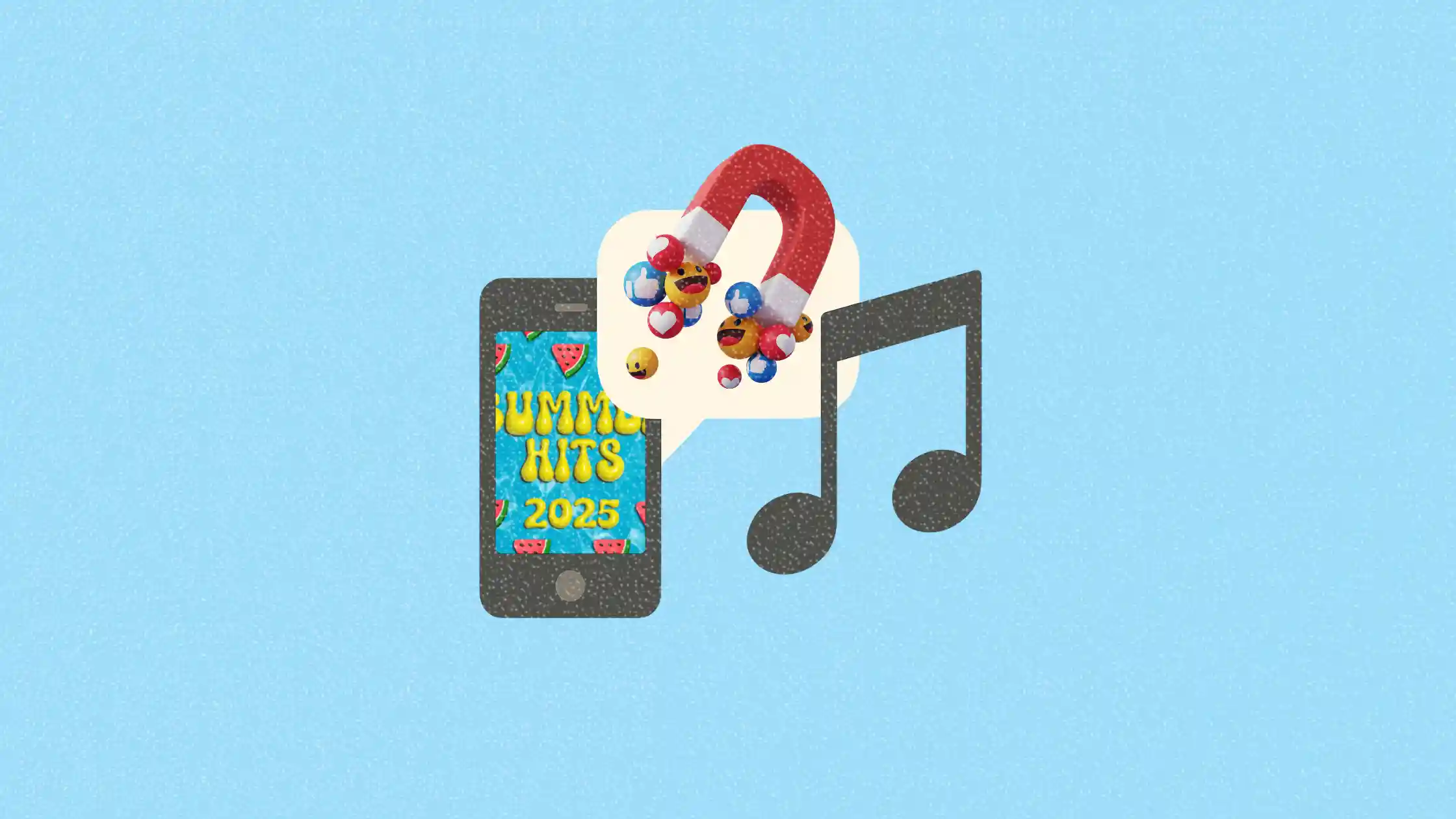
The Song of the Summer is supposed to be obvious. Each year, one track dominates playlists, TikToks, and radio airplay until it’s seared into collective memory.
But in 2025, marketers and music fans are facing a curveball: the online conversation around summer hits is shrinking fast, while fans are digging up older songs to define the vibe.
This article dives into Meltwater’s social listening analysis of Billboard’s “Songs of the Summer” chart. From June 1 to July 7, 2025, we tracked conversation across 17 platforms to find out which tracks captured the most attention, and what that means for marketers who rely on cultural intelligence to stay relevant.
Short on time?
Here’s a table of contents for quick access:
- What the data says about the 2025 Song of the Summer
- Social mentions fall 94% compared to 2024
- Older releases lead the summer buzz
- What marketers should know
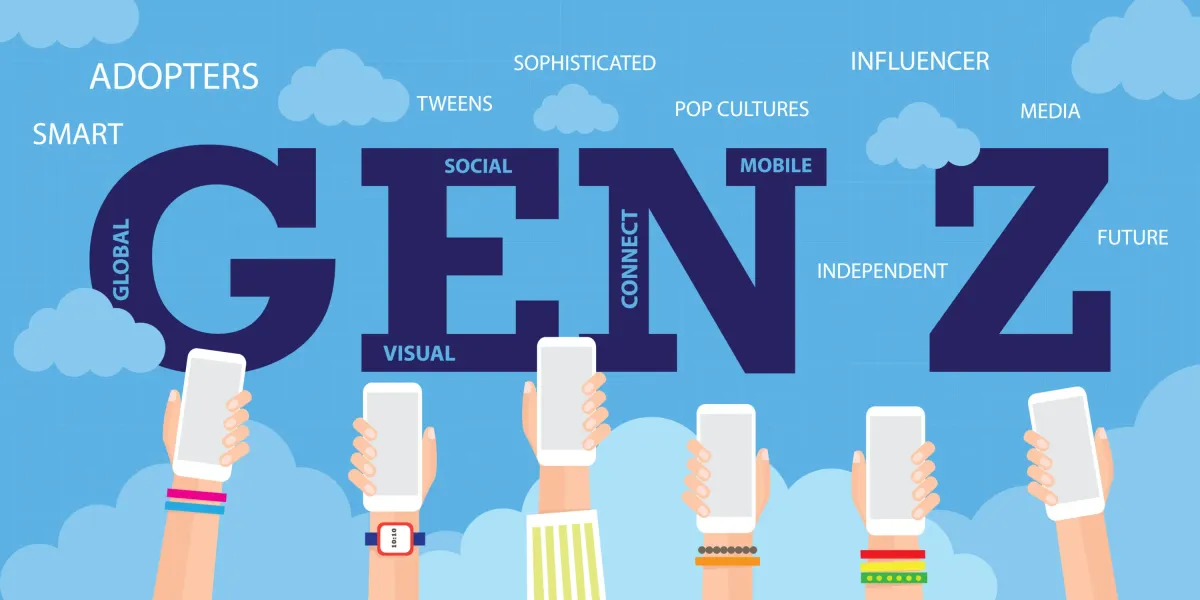
What the data says about the 2025 Song of the Summer
By online chatter, the crown goes to “Die with a Smile” by Lady Gaga and Bruno Mars. Despite sitting at #6 on Billboard’s chart, the track pulled in around 30,000 mentions across X, YouTube, and Sina Weibo. “Luther” by Kendrick Lamar and SZA ranked second in buzz, while Alex Warren’s “Ordinary”—which has held the Billboard top spot for five straight weeks—only placed third in conversation.
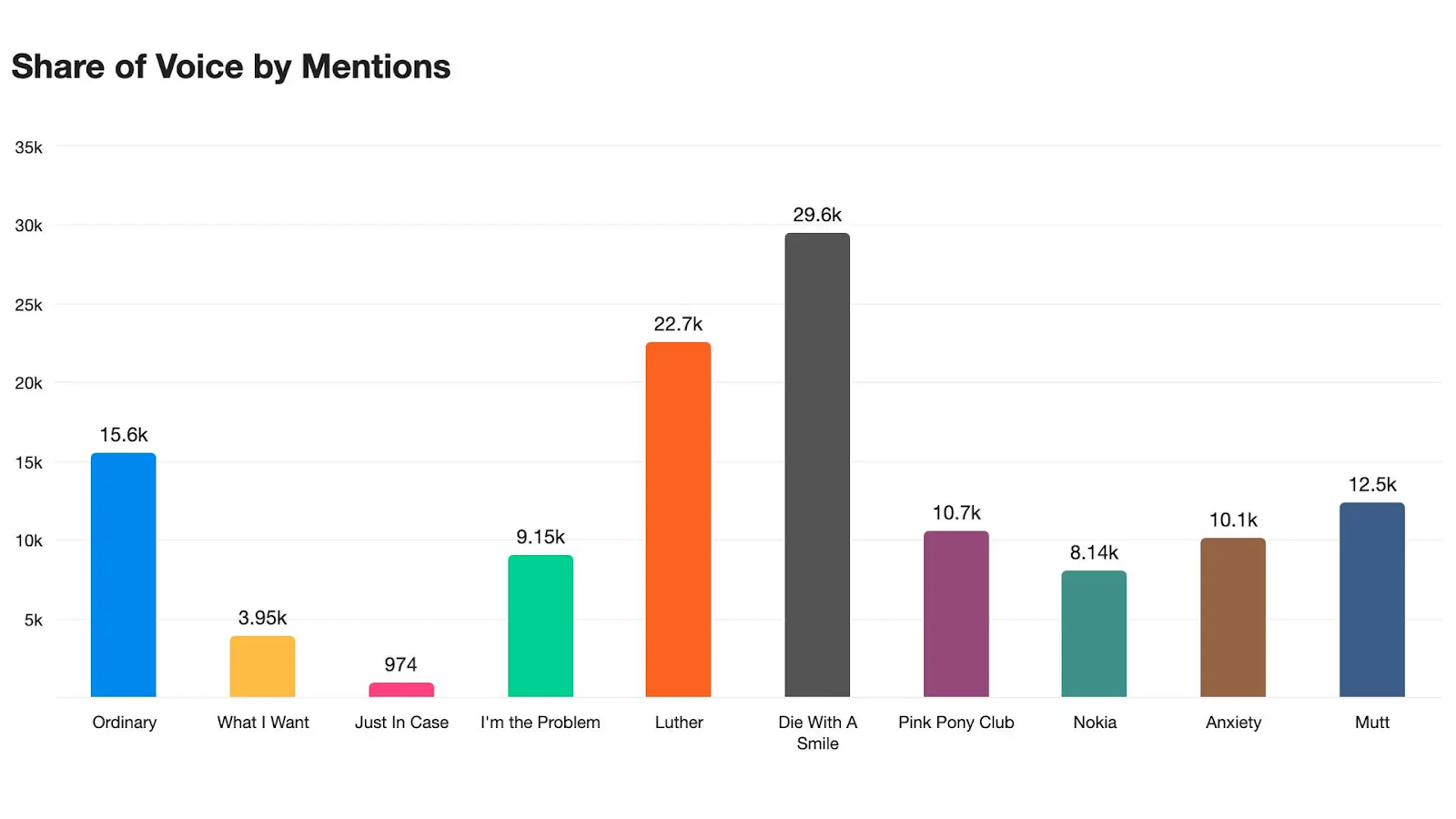
The biggest surprises came from Morgan Wallen. His tracks “What I Want” and “Just in Case” slid seven spots compared to their Billboard rankings, while Leon Thomas’s “Mutt” surged from #10 on Billboard to #4 by mentions.
Social mentions fall 94% compared to 2024
Here’s the striking part: summer hits aren’t inspiring as much chatter as they used to. Between June 1 and July 7, 2024, the top 10 summer songs generated more than 2 million mentions. This year, the same analysis shows just 123,400 mentions, a 94% plunge.
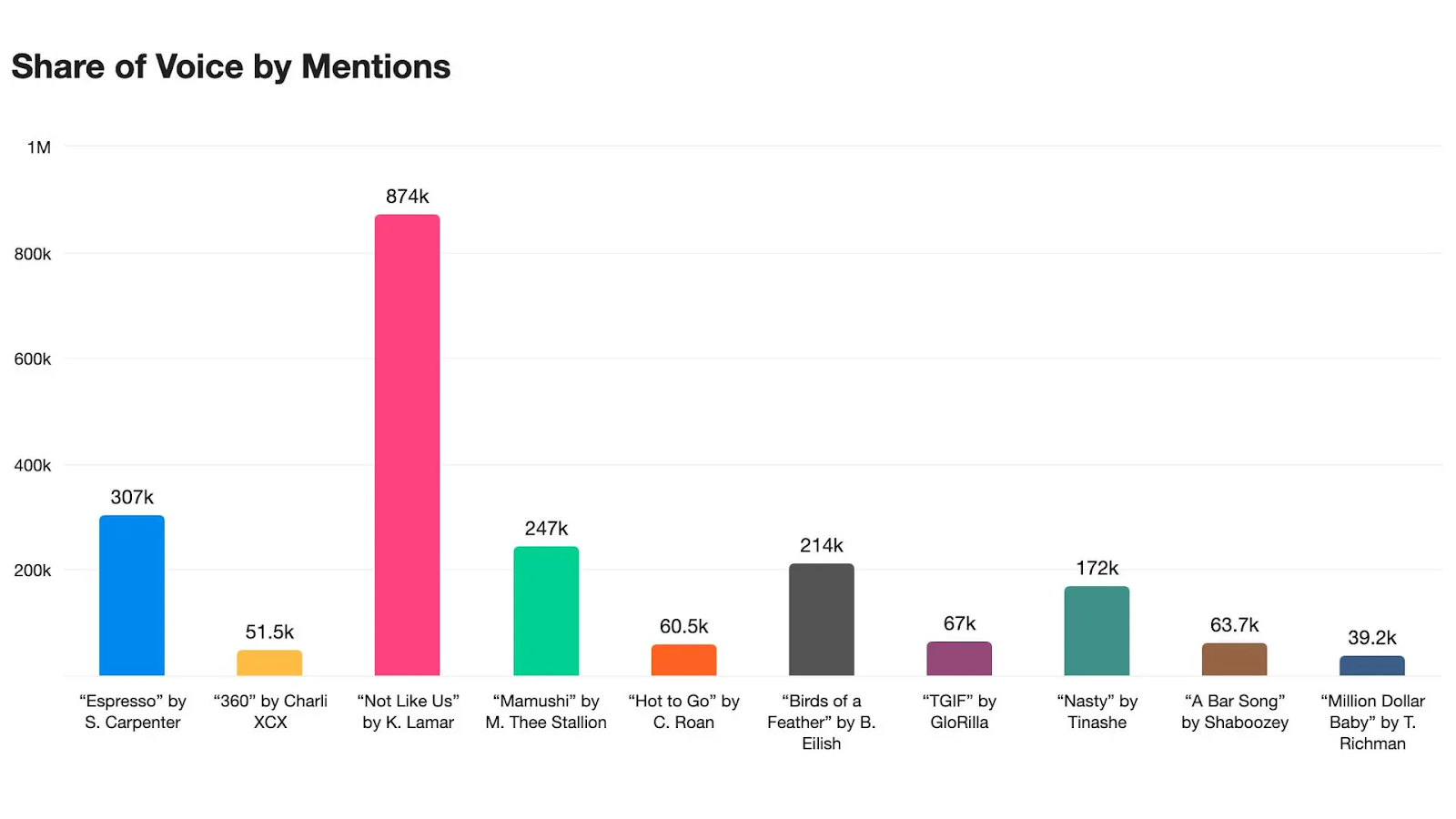
Paradoxically, discussion of the concept “song of the summer” is up 60% year-over-year. That suggests audiences are still debating the cultural idea, but not rallying around a breakout track.
Older releases lead the summer buzz
Traditionally, summer hits debut in spring and ride momentum into the heat of July.
But in 2025, four of the Billboard top 10 songs predate the year entirely. “Die with a Smile,” “Luther,” and “Mutt” were released in 2024. Chappell Roan’s “Pink Pony Club” first dropped in 2020, years before gaining mainstream traction. Even Doechii’s “Anxiety” has roots in a 2019 YouTube upload before being re-released this year.
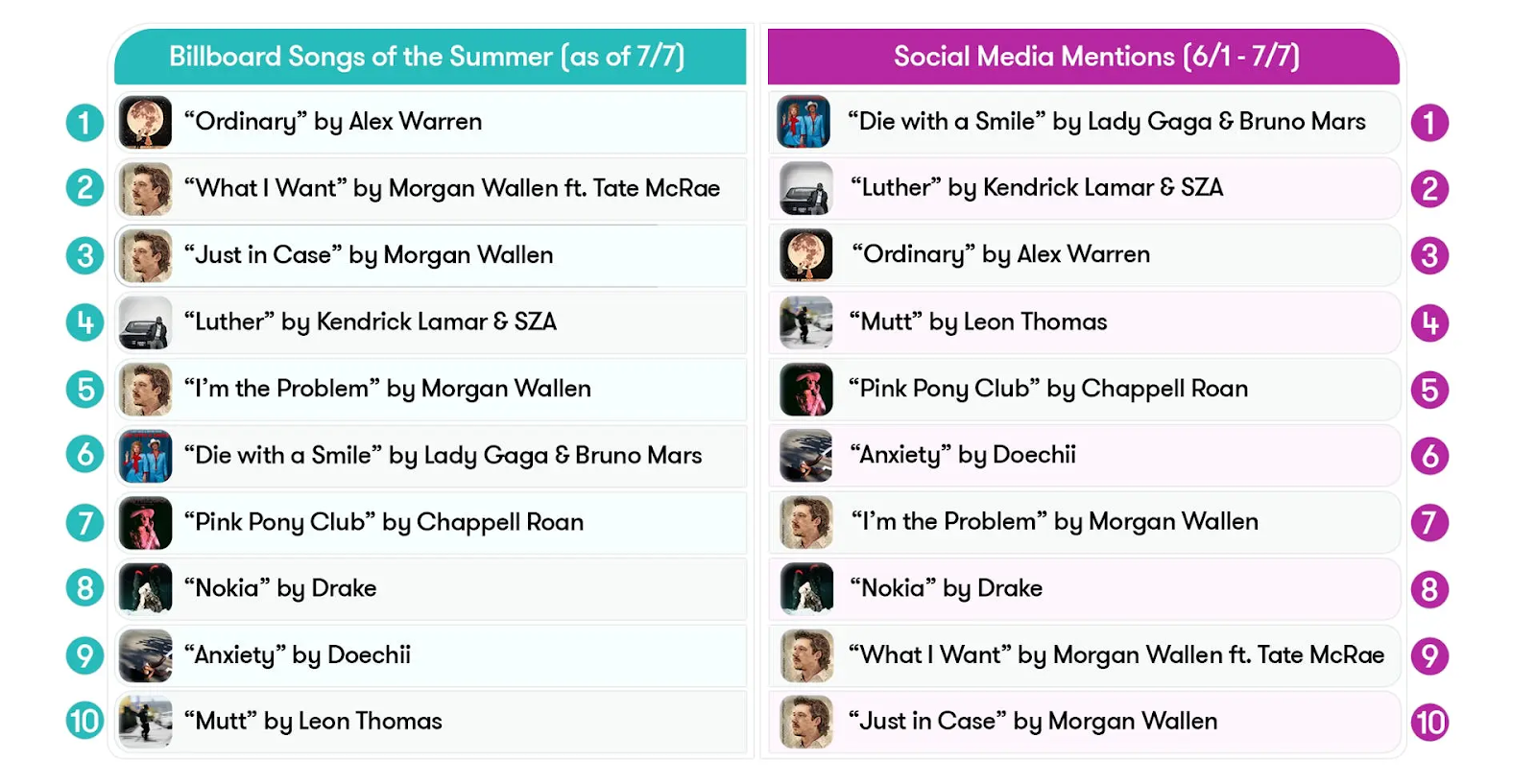
Fans are discovering or rediscovering music at their own pace, often months or years after release. Social platforms, not release calendars, are driving momentum.
What marketers should know
The data tells a bigger story about culture, not just music. For marketers, three takeaways stand out:
- Cultural timing is fluid
Unlike fashion micro-trends that vanish overnight, sleeper hits can bubble for years before breaking out. Marketers should resist over-indexing on “newness” and instead monitor back catalogues for resurfacing tracks and memes.
- Charts don’t equal conversation
Billboard’s rankings track sales, streams, and radio play, but that doesn’t align with what people talk about online. Social buzz is a more predictive metric for spotting resonance and potential virality.
- Rediscovery is the new discovery
From Doechii to Chappell Roan, fans are giving old content new life. For brands, this reinforces the value of evergreen storytelling and flexible campaign timing that can plug into both fresh drops and nostalgic revivals.
The Song of the Summer isn’t dead, it’s just evolving. With fewer mentions, older tracks topping buzz charts, and audiences rewriting the rules of discovery, marketers need to adapt. Staying ahead means tracking social conversation, embracing cultural intelligence, and preparing for a landscape where yesterday’s releases can define tomorrow’s trends.




